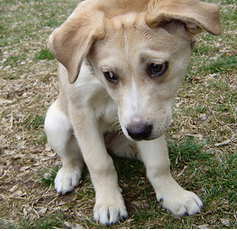Animal Abuse and Domestic Violence
In recent years, a strong correlation between animal abuse and family violence has been established. Child and animal protection professionals have recognized this link. Animal cruelty is one of the earliest and most dramatic indicators that an individual is developing a pattern of seeking power and control through abuse of others. When animals in a home are abused or neglected, it is a warning sign that others in the household may be in danger.
Pet-owning women entering battered women’s shelters often report that their batterer has injured, maimed, killed, or threatened the family pets for revenge or to psychologically control them. Often the violence towards the animals occurs in the presence of the women and their children. Frequently domestic violence victims whose animals have been abused see the animal cruelty as one more step in a long history of violent behavior directed at them and their children. They may resist entering shelter as they fear leaving their pets behind will put the animals at risk at the hands of their abuser.
Why Do Abusers Batter Animals?
- To demonstrate power and control over the family
- To isolate the victim and children
- To enforce submission
- To perpetuate an environment of fear
- To prevent the victim from leaving or to coerce her to return
- To punish the victim for leaving or showing independence
 What Can Law Enforcement Do?
What Can Law Enforcement Do?
It is critically important that first responders understand the connection between animal abuse and family violence. When responding to domestic violence calls, it is imperative to be alert for signs that children and/or pets may be victims of abuse. When questioning children, the children may be more willing to talk about what has happened to their pet than about what has happened to them.
Victims and Children Should Be Asked:
- Do you have any pets?
- Has the batterer or anyone else threatened to harm your pet?
- Will you need help to find a safe place for your pet if you leave?
Be sure to document any signs of animal abuse and report it to the appropriate agency empowered to investigate and prosecute animal cruelty. Many victims will not go forward with the prosecution of their abuser. However, prosecution on animal cruelty charges can result in imprisonment or treatment equivalent to what might result from a domestic violence prosecution.
What Victim Advocates and Domestic Violence Shelters Can Do
- Work with victims to be sure they include pet in their safety planning.
- Include questions about any threats or injuries to pets on intake forms.
- Help clients prove pet ownership.
- Help clients retrieve pets that have been left behind.
- Work with legislators to ensure that pets can be included in orders of protection and educate judges about the necessity to do so.
- Work with local humane societies or animal control officers to establish programs for the emergency housing of pets coming from homes experiencing violence.
- Alternatively, arrange temporary shelter for pets with a veterinarian, family member, trusted friend, or local animal shelter.
- Form community coalitions against family violence that include humane societies, animal control agencies, and veterinarians. Provide cross-training opportunities.
What Victims Can Do
- Have pets vaccinated against rabies.
- License pets with the town or county and make sure these registrations are in your name.
- Do not leave your pets with your abuser.
- Create a safety plan for your pets.
- Arrange for temporary shelter for your pets with a veterinarian, family member, trusted friend, or local animal shelter.
